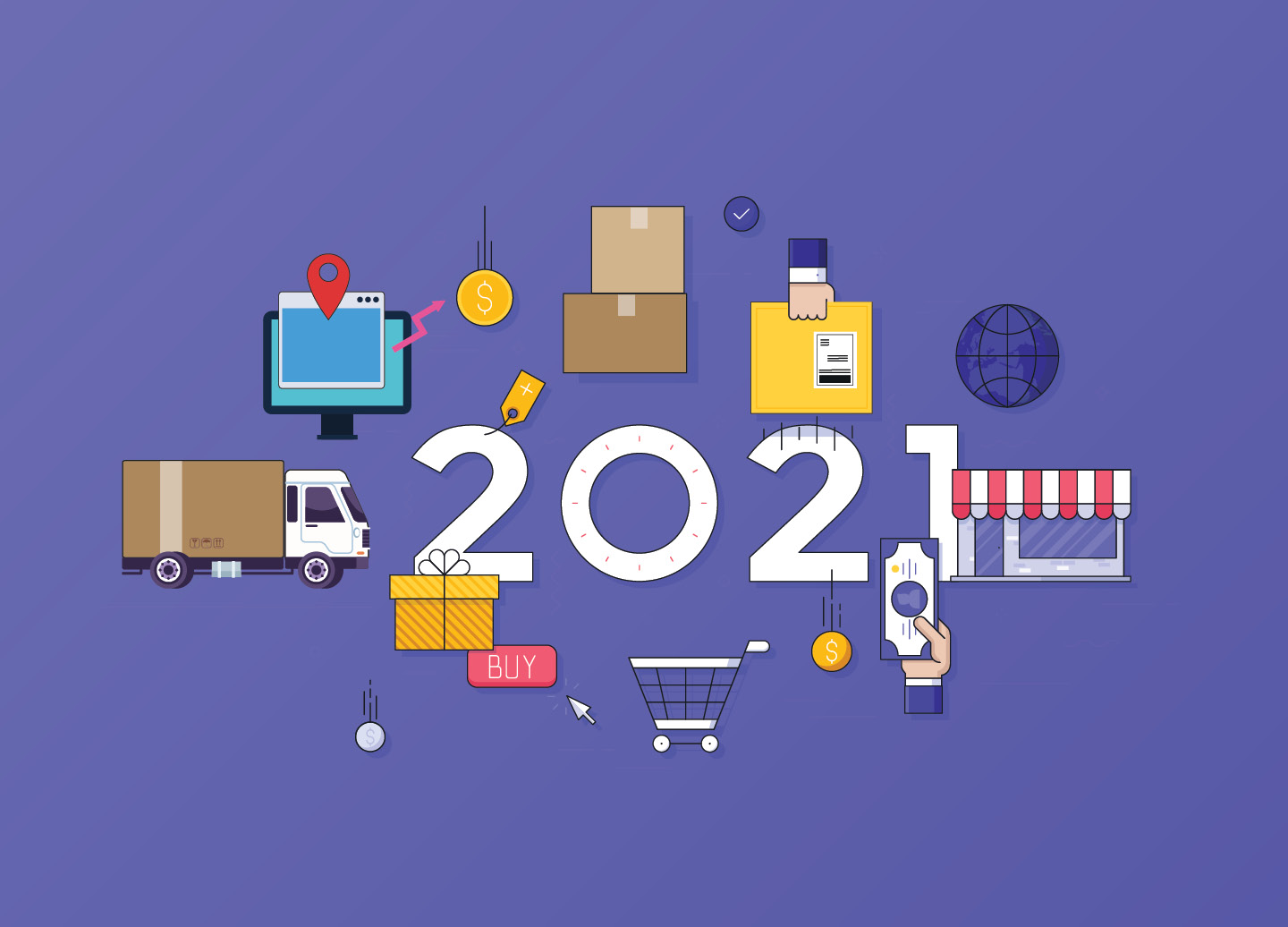The experts at ProShip share key shipping data from 2021 and how that translates to insight for 2022.
By the end of the year, most people are ready to say, “good riddance” and start anew on January 1. This past year saw shifting consumer behavior, pent-up demands, labor struggles, inventory woes, and soaring shipping costs as continued challenges from 2020 and some brand new. With an unpredictable pandemic-triggered year under our belt, shippers are looking forward to seeing what 2022 will bring.
In the spirit of 2021’s final preparations, we are counting down some key statistics that can sum up this past year. Hopefully, this investigation into the past will bring insight into the future.
The Countdown
The labor shortage has ambushed the manufacturing sector and its supply chains with 10.9 million open positions halfway through 2021, this number tipped over 11 million in October.
FedEx, UPS, and the Postal Service delivered over 9 out of 10 packages on-time between Nov. 14 and Dec. 11.
U.S. retail sales rose 8.5% during this year’s holiday shopping season from Nov. 1 to Dec. 24, powered by soaring ecommerce sales.
Over the last 5 years, 7 major retailers have purchased shipping carriers (3 happened in 2021).
During Cyber Week, U.S. sales reached $62 billion (up 4 percent YoY) and global sales reached $275 billion (up 2 percent YoY). The largest single shopping day over Cyber Week was Black Friday (up 2 percent YoY global, up 5 percent YoY U.S.) as holiday demand was smoothed out across the entire month of November.
Both FedEx and UPS say that rates will go up an average of 5.9% next year across most services, the first time in eight years that either company had annual increases above 4.9%.
Consumers continued to prioritize health, safety, convenience, and trust this Cyber Week. U.S. stores offering curbside or in-store pickup grew their revenue by 50% more YoY over Black Friday than retailers not offering these pickup options.
Regional carrier LSO had an early pre-peak cutoff date of October 4 for taking on new customers, and Lasership stopped as early as July.
Amazon Web Services had 3 major outages in the month of December 2021.
Rapid delivery is the new normal – roughly 75% of apparel, hard goods, and specialty retailers intend to build out network capabilities that offer 2-day or faster delivery. Almost 42% are aiming for one-day click-to-customer lead times by 2022.
Supply Chain visibility is ranked as the #1 priority for supply chain management and logistics leaders post-COVID.
The Supply Chain Takeaways
Variety
With several carrier issues mentioned above, a diversified carrier portfolio makes sense. A variety of carriers in your mix eases capacity constraints and helps to avoid the congested hubs of the major carriers – both expected to continue into 2022. In addition, carrier diversification allows for fast shipping options which have become essential in the eyes of shoppers (like same-day or ship-from-store). This is not to mention all the surcharges you could avoid from a broader carrier mix. With carriers noting earlier and earlier new-customer cutoff dates each year, creating a diversified mix of carriers sooner rather than later will allow you balance capacity between the right fit for each service and volume threshold. [Top 4 Myths About Carrier Diversification] All in all, employing a shipping software solution that leads the industry in certified and compliant shipping carriers will set your supply chain stage for a successful 2022 and beyond.
Agility
2021 served as a reminder that we still don’t know what is to come. The best strategy for that unknown is a flexible and agile shipping solution. Because fast and reliable delivery is such an important part of the customer experience, businesses should focus on expanding delivery options for shifting consumer behaviors. One key method of broadening delivery options to meet customer expectations is through multiple channels of inventory. With a multitude of inventory sources, shippers can reduce transit times and cut transportation spend, utilizing the best source for inventory. Another pivotal approach is employing a top-notch rate shopping technology [Learn more about ADS] to enhance functionality of your supply chain. This technology allows retailers to choose the most effective and time efficient transit method for delivering packages.
Visibility
The disruptions to the supply chain have now become a complicated set of problems where issues are compounded by others, for example the labor shortage. Often, businesses look toward system efficiencies and automation to mitigate the strain. An integrated supply chain systems approach allows businesses to congregate this data, developing detailed awareness leading to strategic insight for optimizing your supply chain. A true real-time, end-to-end visibility solution empowers stakeholders across the company to reduce transportation cost, reduce transit time and eliminate any non-value-added internal processes. [Read more about enVista’s Transportation Business Intelligence solution]
Ready to look to the future with ProShip?
No matter the numbers, the supply chain just keeps on trucking. And if the past year has taught us anything, it’s that preparing for the worst is often worth the time and money. The pandemic wasn’t the first supply chain disruption, and it probably won’t be the last. Stay tuned in 2022 for more parcel shipping insight from the thought leadership team at ProShip or contact us today to start supercharging your supply chain with the multi-carrier shipping software that 25% of today’s top retailers who ship parcel trust.
Sources:
Five Reasons Labor Shortages Are Impacting Supply Chains
Why Christmas Gifts Are Arriving on Time This Year
Mastercard Spendingpulse: U.S. Retail Sales Grew 8.5%* This Holiday Season
Shippers Owning Capacity: The Pros, The Cons?
The Shipping Crisis Is Getting Worse. Here’s What That Means for Holiday Shopping
Shipping And Logistics Costs Are Expected to Keep Rising In 2022
Retail’s Need for Speed: Unlocking Value In Omnichannel Delivery
Supply Chain Execs Rank Visibility Top Priority Post-Covid
Salesforce Data Reveals Record High $62 Billion In U.S. 2021 Cyber Week Digital Sales
Amazon Web Services’ Third Outage in A Month Exposes A Weak Point In The Internet’s Backbone

 Back to Blog
Back to Blog






